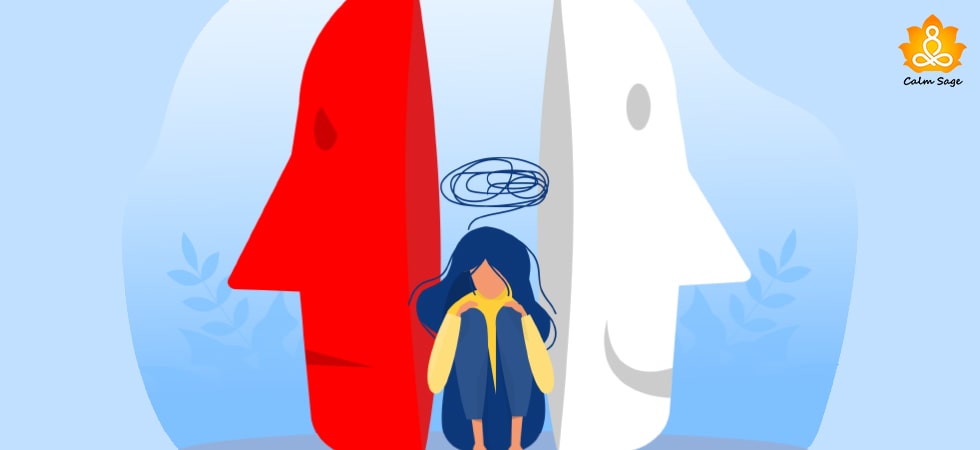Spring Mania in Bipolar Disorder: What Is It And What To Do

Spring is a time of renewal and blooming flowers that add optimism to the air. But for some, especially for people with bipolar disorder, spring can usher a different kind of change – an increase in the manic mood, also known as spring mania. This unpredictable mood shift disrupts the usual springtime joy and replaces it with a rollercoaster of emotions and impulsivity.
I know this whole concept of bipolar mania in spring sounds odd but trust me, it’s an underrated phenomenon that can impact your mood, well-being, and health.
So, let’s read on to know what spring mania is in bipolar, what is the science behind it, and what you can do when you experience bipolar mania in spring.
What is Spring Mania?
Bipolar disorder is characterized by intense and extreme mood swings, ranging from depressive lows to manic highs. Spring mania, specifically, refers to the heightened episodes and symptoms of manic or hypomanic phases during springtime.
These episodes involve a heightened sense of energy, racing thoughts, impulsive behavior, rash decisions, and a feeling of invincibility.
Unlike the joyful anticipation of spring, spring mania can be a disruptive and potentially dangerous experience for those living and diagnosed with bipolar disorder.
Symptoms of Spring Mania to Watch Out
The signs and symptoms of spring mania can be subtle or dramatic. Here are some common symptoms to watch out for;
- Increased energy and restlessness
- Racing thoughts
- Pressured speech
- Difficulty focusing
- Grandiose ideas
- Feeling overly confident
- Trouble falling asleep or staying asleep
- Feeling energized even on minimal sleep
- Engaging in impulsive and risky behaviors
- Increased use of substances such as alcohol and drugs
- Making rash and poorly thought-out decisions
- Easily getting frustrated and short-tempered
- Constantly feeling on edge
Know that not everyone with bipolar disorder will experience spring manic, and the intensity of the symptoms can vary from person to person. However, knowing the signs can help you and your loved ones identify spring mania episodes early on.
What Causes Spring Mania?
The exact cause of spring mania isn’t known, but research suggests various factors play a contributing role in causing spring mania. Springtime often adds daylight hours, which can disrupt the circadian rhythm – the natural wake-sleep cycle of the body. This disruption can trigger mood swings in people with bipolar disorder.
Mania in bipolar can also be linked to an imbalance of neurotransmitters like dopamine and serotonin. Seasonal changes might influence these chemicals, contributing to your mood swings.
Although spring means more sun exposure, there’s the factor of low vitamin D levels that might contribute to spring mania. Lower vitamin D can be linked to depression symptoms. With less sunlight in winter, you might feel depleted of vitamin D, and the sudden increase of vitamin D levels in spring could cause drastic mood shifts.
The Impact of Spring Mania on Well-Being
You might think that spring mania is just a seasonal episode, so how much damage can it do? But what we don’t realize is that just a minor episode can significantly impact your well-being. How? Let’s take a look;
- The irritability, impulsivity, and rash decision-making that come with bipolar mania can damage relationships with family, friends, and your partner/spouse.
- Reckless behavior and impulsive spending during a manic episode can lead to significant financial strain, especially when you’re not prepared for it.
- Mania can also make it harder for you to concentrate on your tasks and responsibilities, meet important deadlines, or even maintain professional relationships.
- Spring mania can also cause physical health issues. When you’re experiencing manic episodes, you might neglect sleep, eat junk food more, and forgo self-care. All these actions can cause a domino effect on your physical and mental health.
What to Do When You Experience Spring Mania?
If you’re experiencing spring manic, then you need to seek professional help or seek out your therapist for additional tips and support. Here’s what else you can do if you’re experiencing symptoms of mania in spring;
1. Talk to a therapist:
Reaching out to your therapist can help as a professional can help you adjust your medication and therapy regimen. They can also provide additional support strategies to help you adjust and make it through the season.
2. Stick to your treatment:
Maintain a consistent routine for medication, therapy, and healthy lifestyle habits. Having a routine and following your treatment plan even when you’re not in active therapy can help you manage the symptoms of spring mania.
3. Take care of yourself:
Make sure you sleep enough, eat healthy foods, exercise regularly, and practice relaxation techniques such as mindfulness meditation to be on top of your game when spring mania springs on you. Pun intended.
4. Talk to your loved ones:
Let your family and friends know about spring mania and its symptoms. This can help you develop a support system to help you recognize and manage symptoms of spring mania when it pops up.
5. Have a mood journal ready:
Track your moods and behaviors as spring approaches. Doing this activity can help you identify your triggers and patterns associated with spring mania or bipolar mania.
Wrap Up…
Spring mania can be a challenging experience, especially if you don’t know what to watch out for. But, understanding the signs and triggers of bipolar mania in spring can help you effectively manage it when it does spring.
By working with your therapist, incorporating self-care strategies, and building a support system, you can manage and cope with the unpredictable seasonal mood swing, and reclaim your springtime joy!
I hope this article helped you understand what spring mania is, the science behind it, and what to do when you experience it. Let us know your thoughts in the comments below.
Take Care!




















